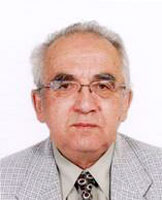The complexity of solving any task about distribution of currents in SPD circuits is seeming. If the algorithm of the task is well set, any calculation on a modern personal computer of an average efficiency will hardly take more than a minute. We present you a method of calculating SPD load currents.

E. M. Bazelyan, D. Eng. S, Professor;
G. M. Krzyzanowski Power Engineering Institute, Moscow;
acknowledged Russian expert in grounding and lightning protection
1. Is there a need in the calculation?
Indeed, is there such a need? There are enough reasons for the doubt. Take a look at fig. 1. It was taken from the Internet. All the currents are strictly determined once and forever. Half of
Read more details on a separate page!
2. The use of substitution circuit with the distributed parameters at a direct strike into the object
Solution of the
Read more details on a separate page!
3. The use of substitution circuit with the distributed parameters at a direct strike into the object or into an overhead line, powering it
One can hardly doubt, that the solution in the frames of the substitution circuit with the distributed parameters in a common case is most authentic. The advantages are very
Read more details on a separate page!
4. When it is impossible to get along without a circuit with distributed parameters
It is not a surprise, but we will talk not about overhead power transmission lines, but about extended underground utility systems. It can be, for example, metal conduits or simply very long grounding buses. The running inductance of such utility system is approximately the same as of the overhead power transmission line. The capacity per unit length doesn't increase significantly (relative dielectric permeability of soil ε, as a
Read more details on a separate page!
5. Useful recommended practices on the calculation of SPD load currents
The time interval for the calculation is chosen the way to provide the drawing of the lightning current pulse front. For example, at the front time of 10 ms (pulse 10/350 ms, on which SPD of the I protection level are chosen), gives quite a satisfactory result with the interval of 1 ms, at which the front is being drawn by 10 calculation points; at an interval of 0,1 ms (100 calculated points on the front) the result of the calculation appears to be brilliant. The question about the current pulses of the next components appears immediately.
Read more details on a separate page!
Related Articles:
 Lightning protection of residential and public buildings - answers to frequently asked questions in the design
Lightning protection of residential and public buildings - answers to frequently asked questions in the design
 Lightning Protection of Large Territories: Parks, Grounds, Plant Territories. Page 1
Lightning Protection of Large Territories: Parks, Grounds, Plant Territories. Page 1
 Lightning Protection of Large Territories: Parks, Grounds, Plant Territories. Page 2
Lightning Protection of Large Territories: Parks, Grounds, Plant Territories. Page 2
 Lightning Protection of Large Territories: Parks, Grounds, Plant Territories. Page 3
Lightning Protection of Large Territories: Parks, Grounds, Plant Territories. Page 3

